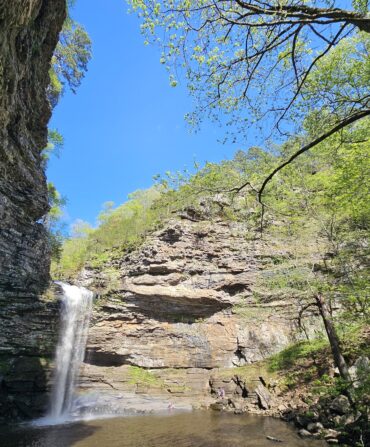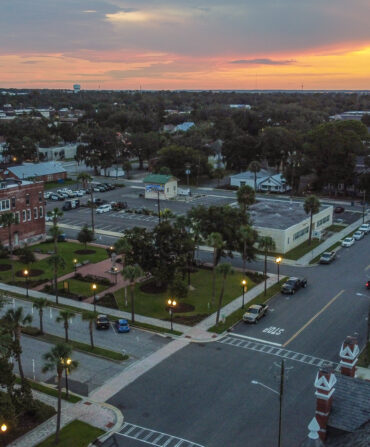“This,” Branko Pjanic is telling me, “is what we call breaking the sombrero.” He’s plunging a four-foot steel tool, essentially a jumbo potato masher, into an open barrel of cabernet franc grapes. From Spanglish to English, breaking the sombrero translates as breaking the cap, but from winemaker to layperson, it means this: He’s busting up the raft of floating grapes at the top—that’s the cap—to integrate them into the fermenting juice below. It’s not easy work, which is why most wineries use mechanical pumps, but at Cava el Garambullo, the winery Pjanic and his wife, Natalia López Mota, founded two years ago, just about everything is done by hand. This aligns with their natural approach to winemaking—organic grapes, indigenous yeasts, little to no added sulfur. But this isn’t all that sets them apart in the wine world.
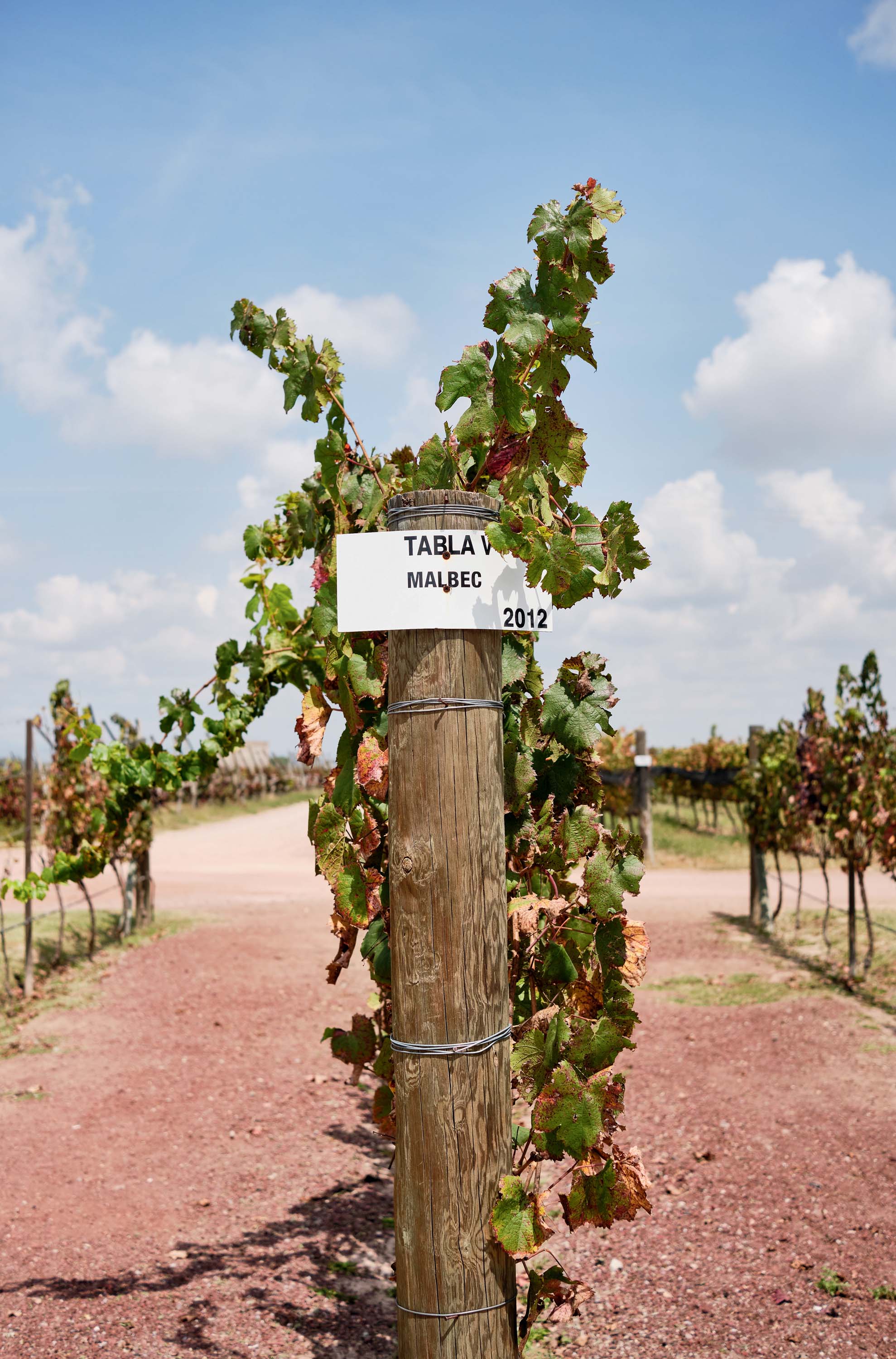
Photo: Leila Ashtari
Rows of malbec vines.
El Garambullo is housed in a former cheese-making facility about fifteen minutes north of San Miguel de Allende, Mexico, and about three hours north of Mexico City. According to the age-old precepts of viticulture, wine grapes shouldn’t thrive here. San Miguel de Allende sits at 20 degrees latitude, well outside of the 30-to-50-degree bands that have long been considered the cutoff zone for serious wine growing. (Mexico’s best-known wine region, Valle de Guadalupe in Baja California, sits just inside the 30th parallel.) In the last ten years, however, winemakers such as Pjanic and López Mota and about two dozen others have been bucking that rule, producing artful, high-IQ wines in a cactus-stubbled region where thirsts are generally quenched with beer or tequila. Aside from the juice, however, they’ve collectively produced something else: a new wine region, still in its infancy, that’s ripe for exploration. Corn tortillas and tempranillo, al pastor and albariño: These are the flavor notes of one of the world’s newest and most intriguing wine frontiers.
As a devotee of all things Mexican and all things grape, I’ve come to scout this budding region. My base camp for three days of exploring is the town of San Miguel de Allende, and not only because it sits at the bull’s-eye of this wine-growing zone. It’s long been a storied travel (and retirement) destination for the silver-fox set, and it’s easy to see why: stunning colonial architecture, old-world cobblestoned streets, a surfeit of art and flowers, and a year-round climate that is reliably, in Goldilocks terms, just right. (It’s also, for Southerners, a cinch to access, with direct flights to nearby León available from Dallas and Houston.) For lodging I settle into the Hotel Amparo, which opened last January. Its five suites are grouped around a fern-, bougainvillea-, and palm-draped patio that beckons you, as does the smart little bar tucked beside the entrance, to lounge.
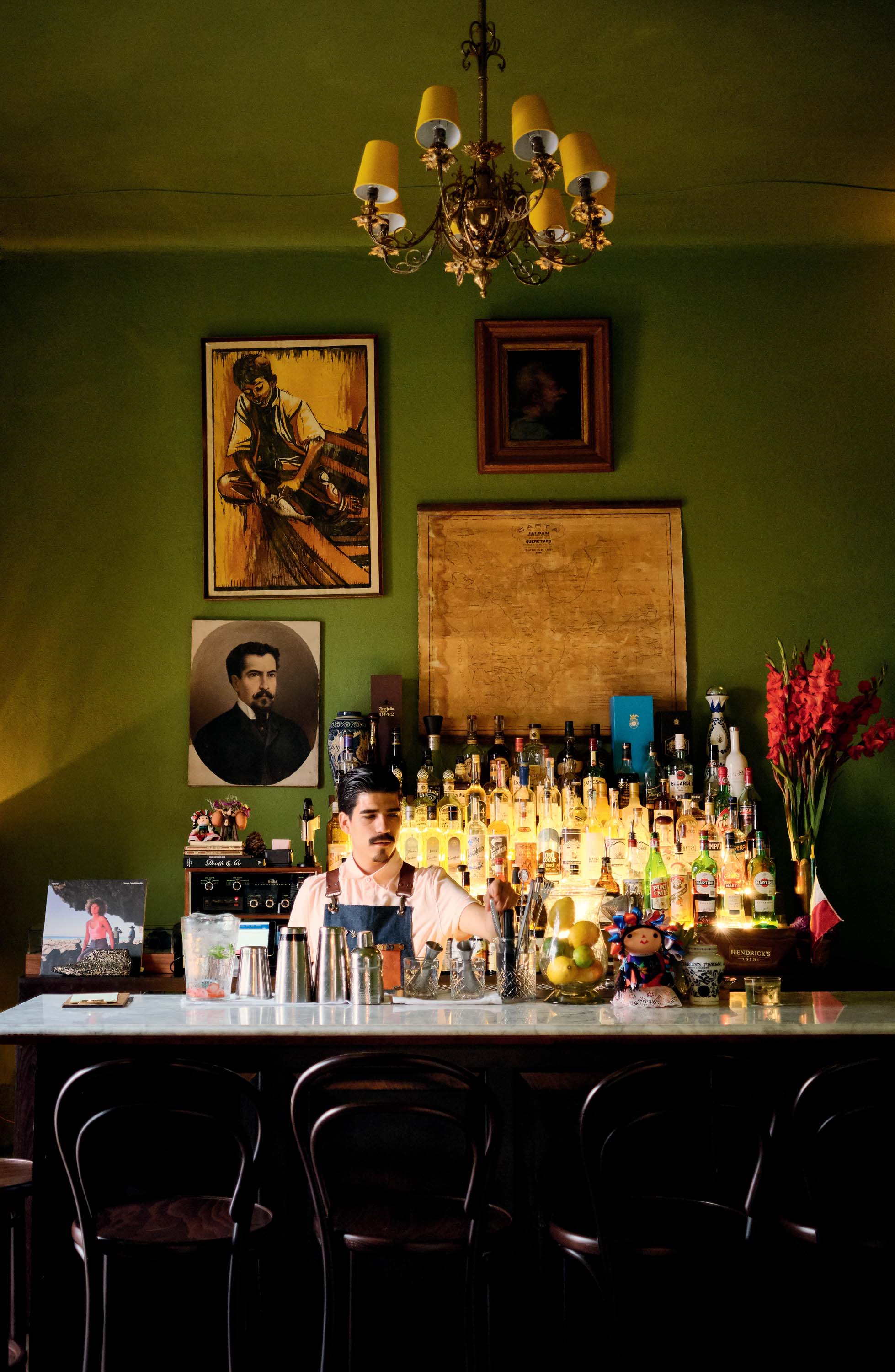
Photo: Leila Ashtari
Gabriel Avila behind the bar at the Hotel Amparo.
But the stronger enticement, in San Miguel de Allende, is to wander the streets on foot. I engage an old friend, Euclides, who recently retired here, to guide me. He ushers me around the corner from the hotel to the Mercado Ignacio Ramírez, an energetic food market that leads to another market and then to another in a kind of dizzying tunnelscape of commerce. As if retracing the story of civilization, the stalls advance from selling meat and produce to medicinal herbs to textiles to metal art to jewelry to religious sculpture to contemporary paintings. From there we commence an aimless ramble, which San Miguel de Allende rewards. (Aesthetically, that is; the narrow sidewalks, steep hills, and lumpy cobblestones can exact a physical price. Do like the locals and wear comfortable, grippy shoes.) The buildings are mostly flat faced, often festooned with wrought-iron lamps, and their stuccoed exteriors are painted ocherous shades of red, orange, or yellow, as if the municipal palette were dictated by the sunset. There’s little in the way of signage, so the explorer must peek into every open doorway. The effect is of an Easter egg hunt, with instead of eggs the bounties being amate bark paintings, or duck and smoked marlin tacos, or a cocktail in which local blanco tequila is shaken with corn juice and garnished with corn-husk ashes.

The barrel room at Bodega Dos Búhos.
But very little wine, at least of the local variety. For that you must roam wider, though not significantly wider; most of the wineries are within a half-hour radius by car. El Garambullo is my first stop, based upon a tip from a wine-savvy local. I’ll confess, however, that my first impression, idling in my car outside a low-slung, unmarked building on a shack-and-scrub back road, is more Breaking Bad than breaking the sombrero. Once inside the small facility and in the company of Pjanic, a thirty-nine-year-old Bosnia native with square-rimmed glasses and the slightly dry intensity of a scientist, I gather that, yes, I’m in a laboratory, but one dedicated to realizing, in Pjanic’s words, “the purest expression of the grapes from Mexico’s high plains.” It’s a high-minded place, with a handsome and compact brick-and-stone tasting room in the back. Visiting is by appointment, and appointments are best arranged via Instagram. The beaten path doesn’t quite lead here.
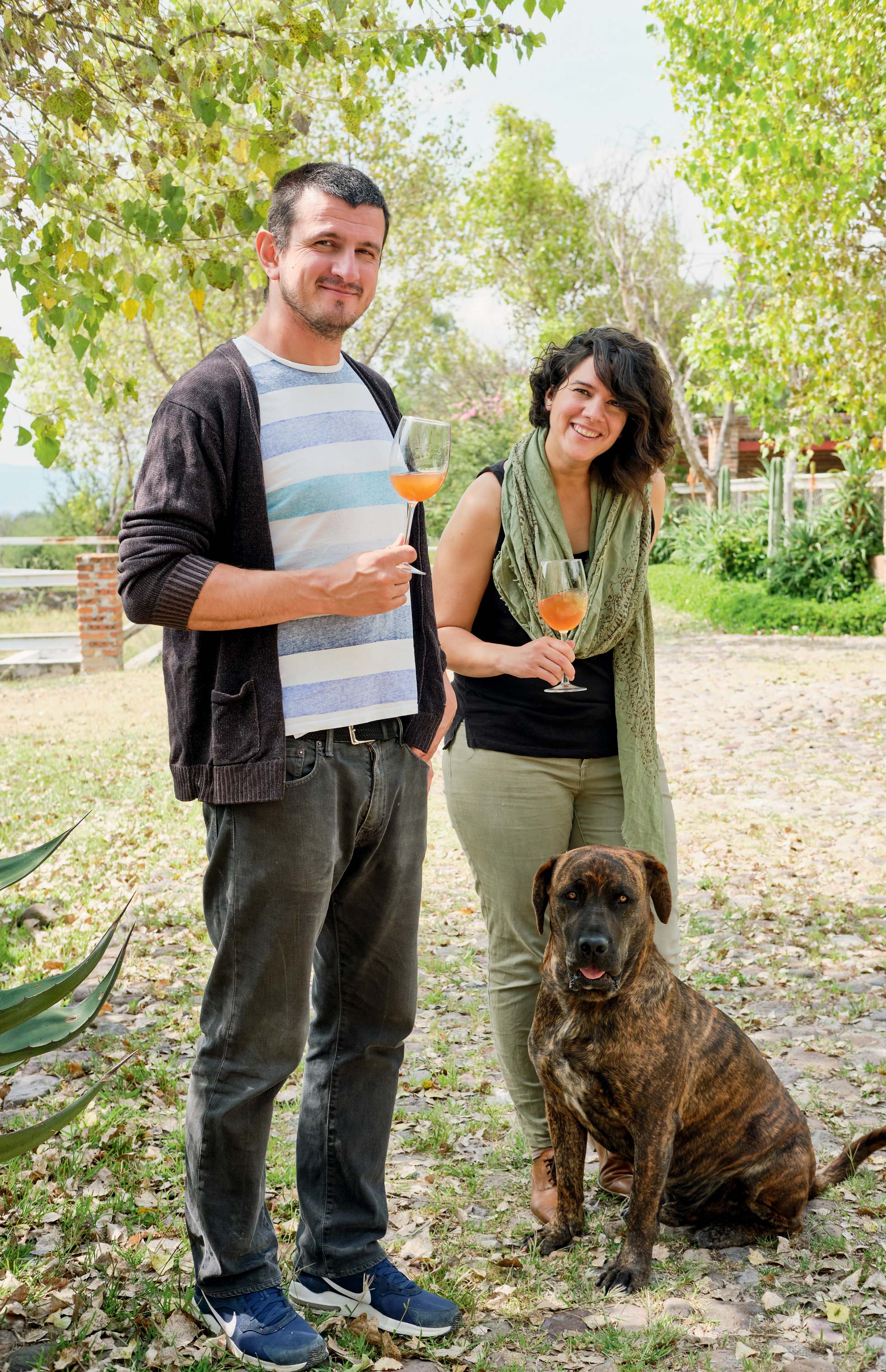
Photo: Leila Ashtari
Winemakers Branko Pjanic and Natalia López Mota.
Stacked between the oak barrels of cabernet franc—the fruit purchased from local winegrowers for whom Pjanic and López Mota work as consultants—are a dozen or so crates of glossy purple grapes. These, Pjanic explains, are a varietal known as Rosa del Peru, which arrived in Mexico with Spanish missionaries in the sixteenth century. “I really want to see what it’s like to work with one of the oldest grapes in Mexico,” he says, outlining plans for an “ancestral sparkling wine.” Two years in, the couple is producing about five thousand bottles a year, most of which is sold here, at the lab, but some of which shows up on the wine lists at forward-thinking Mexico City restaurants. He uncorks a bottle of white, or more precisely orange, a blend of chardonnay and albariño that he fermented with the grape skins to imbue it with tea-like tannins and an amber glow. It’s a complex, idiosyncratic wine, with the chewy mouthfeel of a red but the acidity of a white; a brilliant match, it occurs to me, for Mexico’s meat-centric but chile-laced cuisine.
“When I came here, eight years ago, I had to throw out fifty percent of what I’d learned in Europe,” says Pjanic, who met López Mota, a Mexico City native, while studying viticulture in France. The vines are young and spindly and still unpredictable. “The revival of the region”—centuries after the Spanish outlawed winemaking by anyone but priests—“is only ten or fifteen years old.” Winegrowers are still experimenting with varietals; a dominant grape, like cabernet sauvignon in Napa or pinot noir in Oregon, has yet to emerge. “You have to be aware that you may never see the fullest expression of all the fine-tuning,” he says, citing the decades it typically takes to establish a new region, for its character to solidify. “In that sense it really is pioneer work, like in the Wild West.”
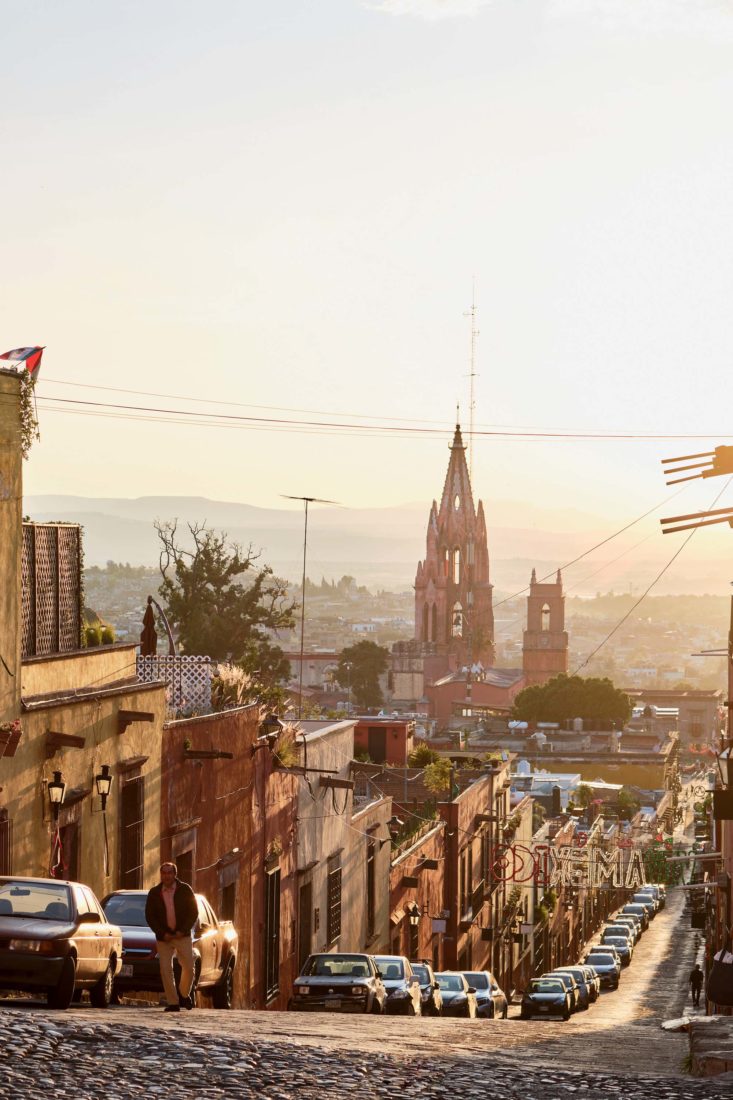
Photo: Leila Ashtari
Sunset in San Miguel de Allende.
Touring the San Miguel de Allende–area wine country isn’t quite like touring Napa or the Loire Valley. Pjanic’s Wild West evocation can sometimes feel apt. Prickly pear cacti fringe the highways, pregnant with their fat maroon fruit. Cattle graze between them. Dogs and men on horseback go cantering along the roadside. Unlike with large-production wine regions, don’t expect to go gliding past idyllic stretches of trellised vines quilting the hillsides. The vineyards here are mostly hidden at the ends of bouncy, dusty dirt roads, and are often on the other side of stern security checkpoints. It’s grittier than most wine tourism. Because of that, perhaps, it’s also more fun.
My next vineyard destination, Bodega Dos Búhos, sits at the end of one such dirt road. The tasting room, which doubles as an art gallery, is housed in a converted barn beside an iconically handsome white 1940s-era hacienda. The thirty acres of certified-organic vineyards begin almost at the doorway, sloping toward the green and violet Picacho del Diablo mountain peak in the distance. For the area, these are old vines, with some of them dating back to 2006, but the original vines weren’t planted for wine. “The idea at the beginning was to grow rootstock for other winegrowers,” one of the general managers, Higinio Aydelotte, tells me. “But the vines kept growing. So we had to do something with the grapes.” Thirteen years later, the winery produces roughly seven thousand bottles per year. As Aydelotte concludes, with a philosophical shrug: “Things happen for a reason.”
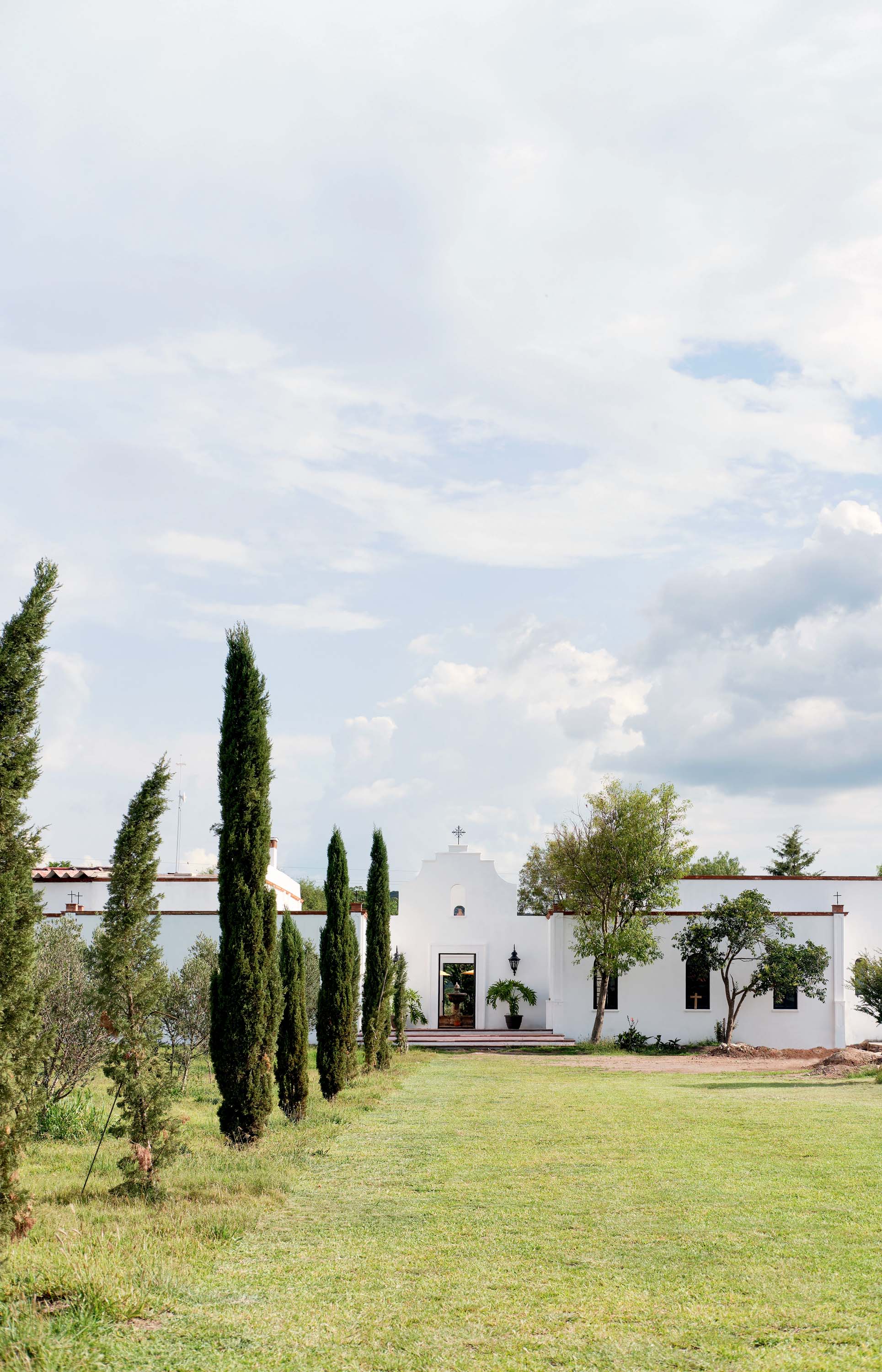
Photo: Leila Ashtari
The hacienda at Bodega Dos Búhos.
We taste through a flight of 2015 reds, all of them elegantly earthy: a grenache, a tempranillo, and a cabernet franc. My favorite, though, is a 2011 vino tinto that’s pulled from the cellar on a whim. It’s a quirky blend of aglianico (an underappreciated Italian varietal), tempranillo, and grenache, and while it calls to mind some of the deliciously funky blends coming out of South Africa’s Swartland region, it mostly tastes sui generis: a frontier wine with its own grapey dialect.
New wine regions mature like internet start-ups or hip neighborhoods: A few scrappy, shoestring pioneers reveal the potential, and big investment eventually follows along. Viñedos San Lucas, east of downtown San Miguel, shows that happening here. It’s part of a family of four wineries, with vineyards totaling 173 acres, but it’s more than a wine operation. It’s a luxury real-estate development, with vineyard-side lots for sale. There are olive groves, lavender meadows, a restaurant, polo fields, and a boutique hotel. It’s the antithesis of gritty. As with Tres Raíces, another wine-centered, architecturally stunning development that recently opened nearby, it suggests serious faith in the future of the area’s viticulture.

Photo: Leila Ashtari
Stone walls and lavender outside Viñedos San Lucas.
About the juice, I’ll admit initial skepticism. Opulent wineries tend to produce opulent wines: brawny, jammy fruit bombs, calibrated for mass appeal. But Mailén Obón, the thirty-one-year-old Argentinean winemaker at Viñedos San Lucas and its sister wineries, wields some subtle moves. To harmonize her red wines with Mexican cuisine, she employs an old Italian technique called passito. “We dry the grapes under the sun to sunburn the tannins,” she explains. “The sweeter tannins let the wine pair better with spicier foods.” This nuance, for me, shines brightest in her lush cabernet sauvignon, which conveys the smoky-savory-sweet notes of a mole sauce. It’s a smart, solid wine, though young; but more than that, it’s a solidly Mexican wine.
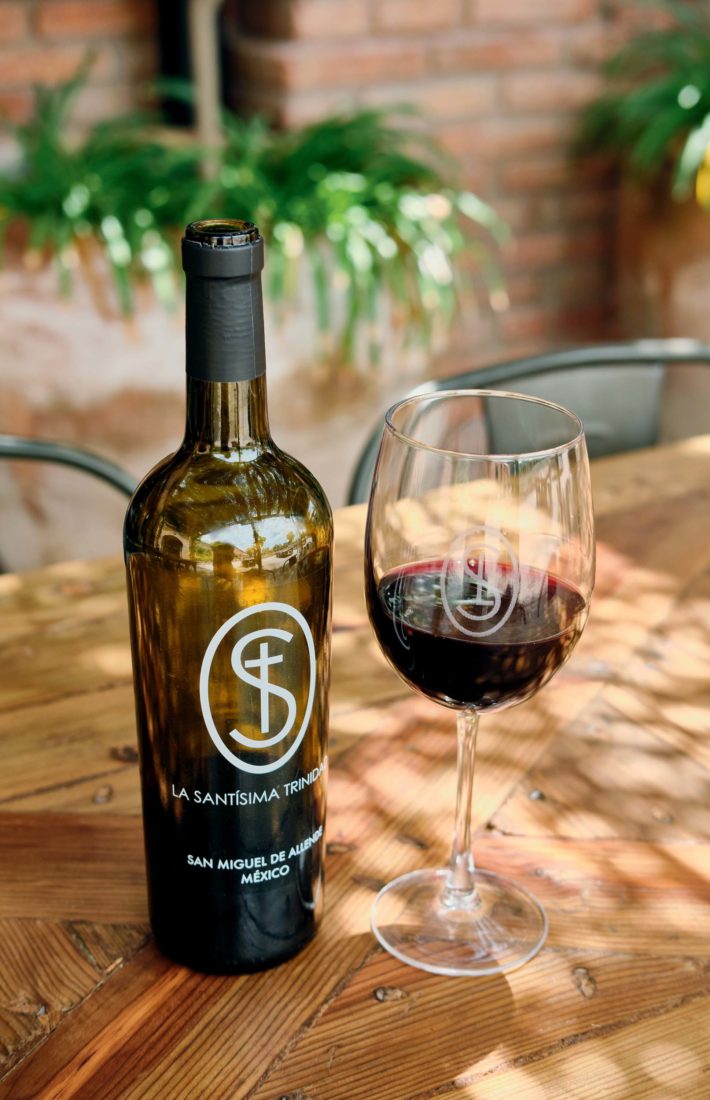
A glass of red at Viñedos San Lucas.
Back on the cobblestones of San Miguel de Allende, after dark, I do what I always do when in Mexico: look for the food cart with the biggest, most boisterous crowd around it. The one I find is stationed outside a cantina, and the tacos al pastor, carved from a thick red shawarma-style slab of pork, then dressed with shaved pineapple and cilantro and a rust-colored chile salsa, are as good an investment as you can make with two dollars. I take the tacos through the cantina’s swinging doors to eat at the bar, and reflexively order a beer. But then wait, I tell the bartender. You have any local wine? He doesn’t. But someday soon, I suspect, he will.



